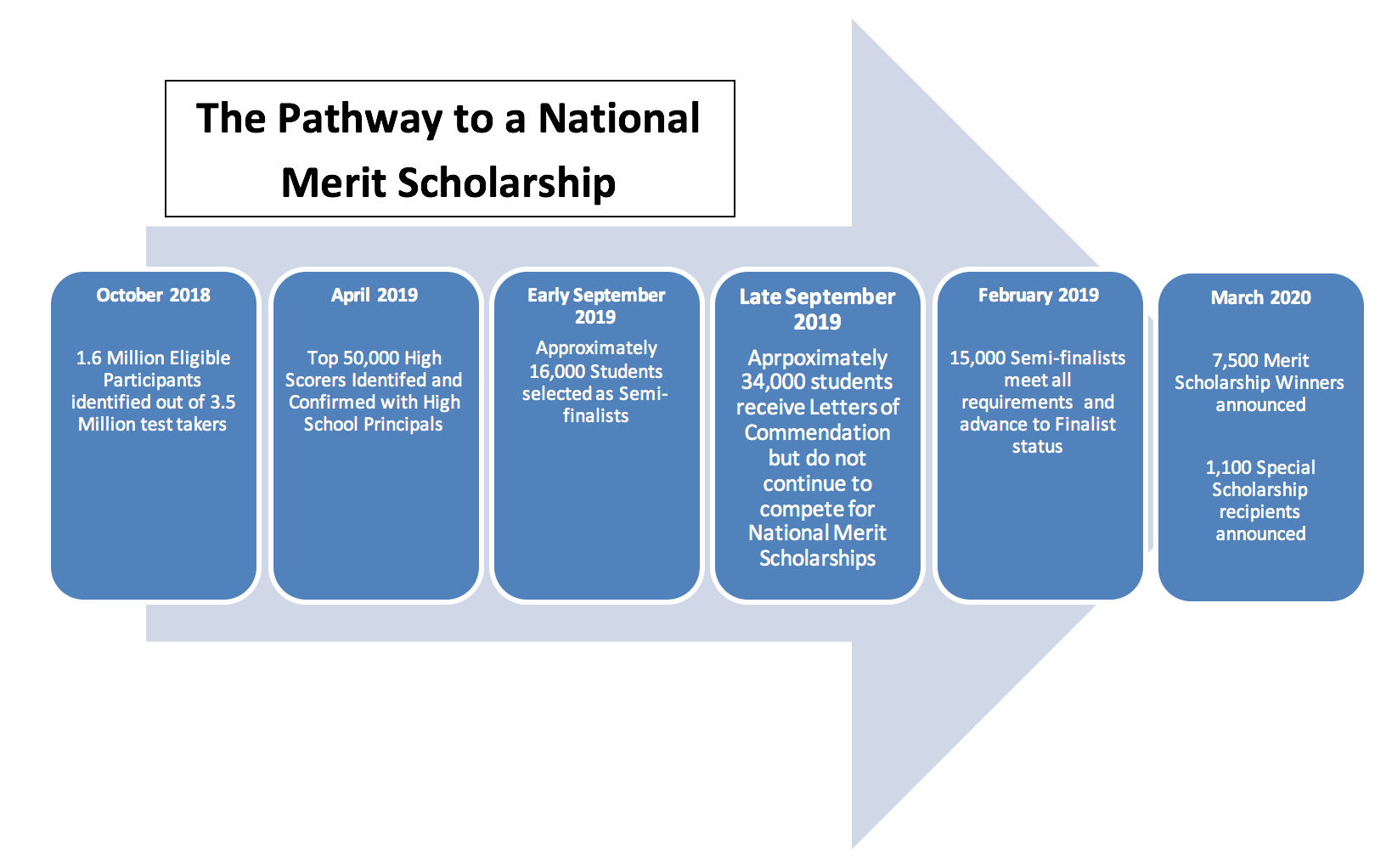This blog is a piece of our longer blog article "The Top 10 Things to Know about the PSAT". If you want additional content on the PSAT, check it out here.
Each fall, high schools students across the country head to the classroom to take the Preliminary SAT/National Merit Scholarship Qualifying Test (PSAT/NMSQT). Popularly known as the PSAT, the exam is co-sponsored by the College Board and the National Merit Scholarship Corporation.
Approximately 1.6 million students of the anticipated 3.5 million who will sit for the 2018 PSAT are expected to be eligible to compete for National Merit Scholarship Program recognition and scholarships. The ultimate prize is recognition as a National Merit Scholar which provides access to three types of scholarships (in addition to an increased profile with college admissions offices):
- National Merit® $2500 Scholarships
- Corporate Sponsored Scholarships
- College Sponsored Scholarships
While the PSAT often confuses parents and students alike, the process and rules defining the competition are very clear. If you don’t have time to read the 64 page official guide (PSAT/NMSQT Student Guide), the following will provide a crash course understanding of the PSAT… Enjoy!

Sections Explained:
Evidence-Based Reading and Writing - is composed of two tests - the Reading Test asks you to read passages and show how well you understand them. The Writing and Language Test asks you to revise and edit text. Both tests place emphasis on words in context and measure your understanding of the meaning and use of words and phrases in the context of extended passages.
Reading passages range in length from about 500 to 750 words, and they are taken from a variety of fields, including U.S. and world literature, history/social studies, and science. Some passages are accompanied by informational graphics such as tables, graphs, or charts; questions ask you to interpret data and to synthesize information presented graphically with that in the associated passage.
To answer each question, consider what the passage(s) say directly, and use careful reasoning to draw supportable inferences and conclusions from the passage(s). The best answer to each question is derived from what is stated or implied in the passage(s) rather than from prior knowledge of the topics covered. Don’t get tripped up by answers that seem correct but are not supported by content in the provided passage.
Writing and Language requires you to make revision and editing decisions to improve the text within a passage. Passages are well-written pieces ranging in length from about 400 to 450 words and covering topics related to careers, history/social studies, the humanities, and science. The test comprises a series of passages and associated multiple-choice questions that put you in the role of someone revising or editing the work of an unspecified writer.
Mathematics assesses your ability to problem-solve and use appropriate approaches and tools strategically. The questions measure math skills across four areas: Heart of Algebra Problem Solving and Data Analysis Passport to Advanced Math Additional Topics in Math.
The exam is divided into two sections: calculator permitted and calculator free.
The ability to reason logically in a variety of situations, including ones related to career, science, and social studies, is tested throughout.
This is not an exam that measures memorization so any formulae required to solve a problem will be provided. Your job is to know how to apply the formulae correctly.
Writing in the workbook is encouraged so you can check your work later; but no credit will be given to writings in the work booklet (only answers on the answer sheet matter)
While calculators are allowed for the calculator portion, problems in this section do not require sophisticated units – purchasing high-end graphing calculators just for this test is not advisable (usage is allowed; they’re just not required).
There are a number of devices that aren’t allowed; it’s highly recommended that you double check before going to take the test whether your model is acceptable; as a general rule, if the device has cellular/internet/Bluetooth capabilities, usage is not permissible.
Other things to keep in mind:
Student Search Service is a service provided by the College Board that can connect you with information about educational and financial aid opportunities from nearly 1,700 colleges, universities, scholarship programs, and educational organizations. More information can be found at bigfuture.org.
Granting access to this service will permit participating eligible organizations to use information that you provide to see whether you might be a good fit for their communities and programs; it can open opportunities (financial and otherwise) for you.
The three most searched criteria are: high school graduation date, cumulative grade point average (GPA), and intended college major.
Phone numbers, actual test scores, or information about disabilities or parental education are not shared with eligible organizations.
The colleges and organizations that participate want to find students who might be a good fit for their environment, classes, programs, scholarships, and special activities. Student Search Service is simply a way for colleges to reach prospective students like you and provide information about available opportunities. BEING CONTACTED DOES NOT IMPLY ACCEPTANCE BY THIS INSTITUTIONS.
Scholarships and Opportunities – outside of the National Merit Scholarship Program and Student Search Service, taking the test can open other opportunities for financial aid. It’s highly recommended that you research opportunities available to you based on your personal background (heritage, socioeconomic status, geographic region, etc.). Please visit psat.org/scholarships for a continually updated list of opportunities.
I hope you’ve found this piece helpful as you look to prepare for your test and ultimately a transition to college and beyond. To learn more about the PSAT and the National Merit Scholar program visit www.nationalmerit.org. Good luck!
This blog is a refresh of a blog we wrote in 2014 by Andrew Potter, Envision CAO, and was updated to provide additional information to help prepare you or your child for the PSAT, by Jan Sikorksy.
background-image: a building with the American flag in front of it

Jan Sikorsky, Ph.D., M.S.
Holding a Ph.D. in Biomedical Sciences and having served on the National Science Teachers Association Committee on College Science Teaching, Dr. Sikorsky is responsible for the science and skills development programs, where under his leadership, Envision’s product offerings have hosted more than 100,000 students.
MORE FROM AUTHOR
|
ADDITIONAL AUTHORS